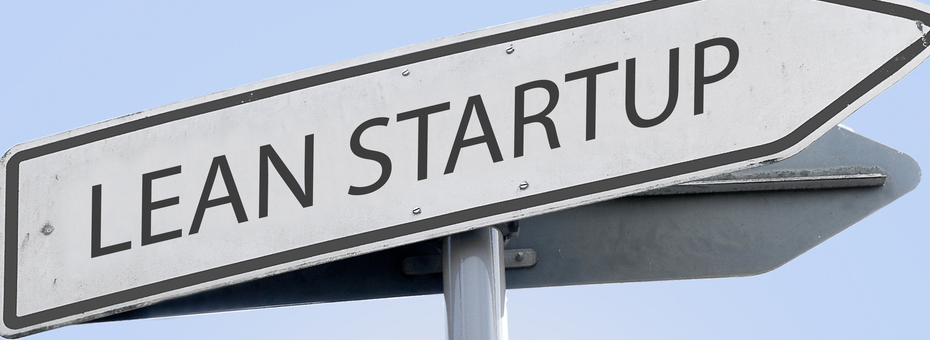The emergence of Lean Startup has taught startups and established companies both that in order to survive, one has to be able to test market assumptions as quickly and cheaply as possible, to iterate through dozens of ideas until you find the one that clicks. Now even established companies like General Electric, Intuit, and PayPal are using Lean Startup thinking, joining the growing horde of relatively young, scrappy startups working out of cafes and co-working spaces all over Silicon Valley.
Most lean enthusiasts know the story of the Single-Minute exchange of Die (SMED). In auto-manufacturing before Lean, it was time-consuming and expensive to make changes to equipment or plant configuration in order to switch from producing one model to another. As a result, most companies maximized their lot size produced of any given part or product.
As the story goes, the Japanese industrial engineer Shigeo Shingo, consulting with Japanese automakers in the 1950s, led a team that iterated through a lot of small process adjustments over a few months, reducing the change-over time of car body molding equipment from up to several days, down to just around ten minutes. SMED is important because it increases “machine up” time and it reduces inventory. This doesn’t just lower costs, it increases quality. When you run large lots of material and store you could be storing a bunch of defects that are not discovered until the next operation. The practice of SMED spread quickly throughout Japan and made Japanese automakers more flexible than their US and European counterparts. This flexibility helped make Japanese manufacturers more competitive and profitable. The ability to make short time-horizon decisions based on market feedback is an advantage over slower, less agile competitors in any industry. This theme of applying continuous improvement to counteract seemingly insurmountable mathematical or economic barriers is what makes Lean so powerful.
Today Lean Startup introduces that same level of flexibility in manufacturing to the process of testing new product ideas, enabling product developers to iterate through an enormous set of design ideas before investing in any large scale production for any particular product.
Before Lean Startup came along, product development was usually based on a set of assumptions about what customers wanted, often from data that was quite outdated by the time the finished product was released to market. Only then would these assumptions be proven true or false. Companies frequently invested millions of dollars and months of development into a new product only to see it flop at industry expos or release parties.
Startups, likewise, would often model themselves after the large companies with which they were familiar and aspired to become. Before Lean Startup taught us that a startup is not just a smaller version of a large company – that in fact a startup is a temporary organization searching for a repeatable scalable business model – startup founders simply executed product development in the way they’d seen it done in large corporations where they had worked previously. Unfortunately, that method doesn’t work so well in small companies, since you quickly run out of money before you make any headway.
The Benefits and Challenges for Established Companies
As work becomes more digitized and the software industry grows – as Mark Andreesen famously quipped, to “eat the world” – large companies are seeing their market share gobbled up by smaller, more agile, more technically savvy competitors. They are starting to take notice of the huge amount of waste and risk embedded in their more traditional product development process. And so large organizations are casting around for new innovative solutions.
Last year, Adobe Systems began integrating Lean Startup approaches into their new products group. Teams experimented with smaller, faster product development efforts just to gather data from the market. In one experiment, a team developed a very lightweight, off-brand web marketing tool called “Spruce”. The team used this product to explore the way that online community managers build and share images on social media. Rather than making assumptions about user behavior, the team used metrics collected from the Spruce experiment to inform the feature roadmap for other products. It took only three months for the team to get from a blank whiteboard to a working product collecting enough data to understand user preferences.
Similarly, Toyota kicked off an innovation studio project this year that organized three small, cross-functional teams to explore new product or service ideas in the automotive space. Each team was given an idea, a budget, and three months to develop a series of experiments to validate or invalidate their idea. The winning idea will be presented to executives at the end of the process. While Toyota helped to define Lean in manufacturing, this type of product development is totally new to them. It will be exciting to see how it impacts their product ideation and design process in the future.
In addition to Toyota and Adobe, GE has widely publicized its work in bringing Lean Startup methods into action through its Fast Works program. Intuit has spent the last five years training its product managers in experiment-driven product development, and setting up the processes and infrastructure necessary to graduate all of the winning experiments into full-fledged product lines. All of these companies are developing their products using experiment-focused, data-driven methods, reducing their risk of launching the wrong product by getting early feedback from customers before investing too much time and resources into a bad idea.
For large organizations who have yet to embrace this trend, the sums being gambled with in developing new products are astronomical compared to those in startups. But because the resources available for R&D in general are so much larger than in startups, it goes fairly unnoticed. Despite the staggering amount of waste in product development, it’s considered just the cost of doing business in large organizations. But those costs are mounting, and the competitive pressure from faster, more nimble upstarts is steadily growing.
Lean Startup brings the flexibility we saw in the SMED story, that enabled rapid change-over of plant configurations, to the rapid change-over now of product ideas. Companies that apply this light-weight data-driven approach to product development are finding that it dramatically reduces costs dedicated to new product development and quickly brings them much closer to their customer.
But it doesn’t come instantly or easily. Integrating these methods into large organizations takes a lot of work. It requires unwavering executive support from the very top, a significant degree of retraining and reorganization of both work spaces and reporting structures on the ground, and a structured and disciplined process for integrating experiment-driven product development into the mainline business units of an organization. The companies mentioned above, who are having success with Lean Startup approaches, have worked very hard, iterated many times, and learned some painful lessons along the way.
But it is well worth the effort if organizations are to survive the coming storm of disruptive, flexible and fast-moving upstart competitors from Silicon Valley. From my view, Lean Startup is quite simply the most revolutionary idea to advance the way business is practiced since the birth of Lean. It’s to product development what Shigeo Shingo’s Single-Minute Exchange of Die (SMED) was for manufacturing.
You can, of course, choose to ignore it, to continue doing your product development the way you’ve always done it. Your organization’s survival, as Deming cautioned us, is not mandatory.





